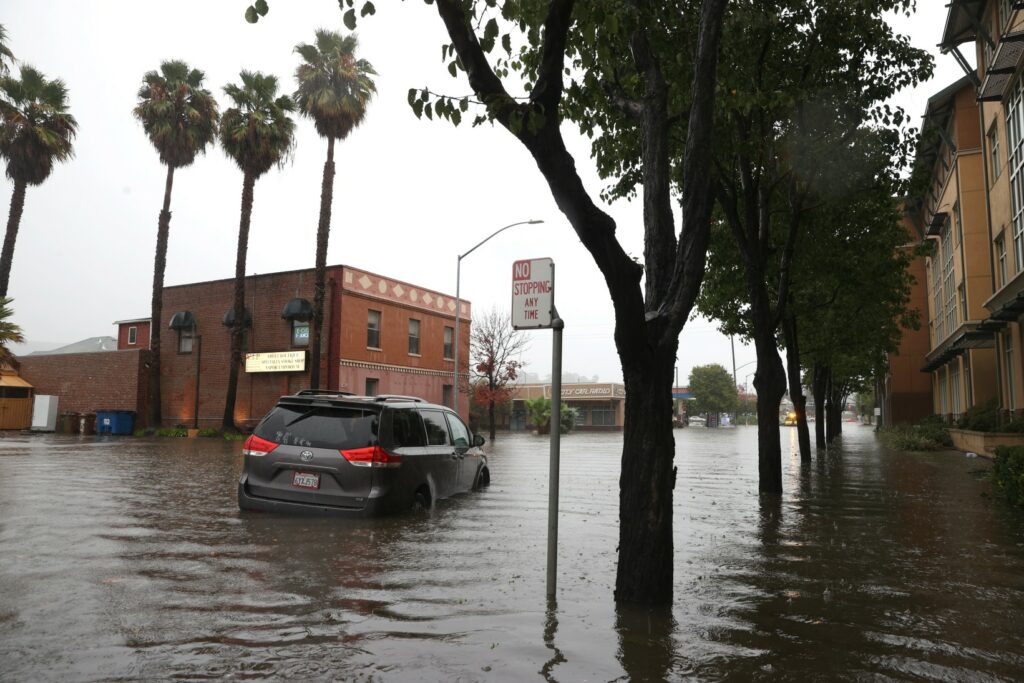
Heavy Rain, Flooding, and Chance of Severe Weather Staring Down the Southern U.S.
January 22, 2024
Posted: January 7, 2023 2:00 am





Long-Range Forecast Shows Storms Moving North and East
The West Coast is begging for mercy from the weather gods as storm after storm moves on shore from the Pacific Ocean. Back-to-back storms pounded the Golden State to close out 2022 and usher in 2023. The latest storm turned into a bomb cyclone, killing at least two people and wreaking havoc as Californians tried to ease back into a routine after the holidays. Unfortunately for those weary of the storms, more powerful weather makers are in the forecast for the state. Here is what you need to know.
It is hard to believe that the West Coast has been under an ongoing drought. After a slight drying out on Friday, more rain and mountain snow is in the forecast for the end of the weekend. A few relatively weaker storm systems may impact the area on Saturday and early Sunday, however, it is the time period between late Sunday through Tuesday that forecasters are watching with worry.
These upcoming storms are forecast to usher in enough moisture to bring heavy rain and the chance of mudslides and flash flooding to the lower terrains. The high country can expect to see more disruptive snow and the chance of avalanches, particularly across the Sierra Nevada.
The rising water on streams and rivers could trigger flooding as levee systems and dams are pushed to the brink. It will be central California that will likely see the worst of the impacts from the early week storm. This storm will also bring additional snow to the highest elevations as well as rain to the intermediate levels of the Sierra Nevada. This rain could be especially dangerous as it melts existing snowpack and sends water rushing through the streams and rivers throughout the valley areas.

What is most worrisome to climate experts is that the ground in this part of the country is already saturated because of the heavy rain of the past few weeks. This will make flash flooding a bigger concern if the moisture continues to fall at this rate.
In addition, the strong winds expected with this storm may also lead to widespread power outages and travel delays. Low cloud ceilings and poor visibility may prove to be problematic for major airline hubs, including those busy airports in Los Angeles and San Francisco.
The silver lining of all of this mess is that the rain is continuing to bring the water levels throughout the state’s major reservoirs closer to normal. This is welcome news for an area of the U.S. that has been dealing with exceptional drought conditions.
Meteorologists are crediting a storm train originating in Asia a few weeks ago for the influx of moisture into the Pacific. This moisture then merged with the subtropical portion of the jet stream to create the perfect storm of precipitation moving onshore along the West Coast.
Forecasters are predicting that this firehose effect of moisture will hang on through about January 17 for the state of California. After this date, it is forecast that the moisture will move to the north and farther inland, migrating away from the coastal areas. This will hopefully bring much-needed moisture to the Colorado River basin by the end of January.
Officials in California are not reading too much into this sudden influx of precipitation. A similar situation unfolded last year when the moisture suddenly dried up by the middle of January.
The good news is that the long-term forecast is calling for more consistent moisture to fire up in February and March. While it is not likely to stack up to the immense rain and snow that the region has been dealing with over the last several weeks, it should still be enough to put California and beyond in a better position for drought relief when compared to last year.
At this point, climatologists are predicting that the northern and central portions of California will see significant relief from the drought by the summer. However, areas located east of the Sierra Nevada as well as Southern California may not see meaningful relief for a longer period.
Did you find this content useful? Feel free to bookmark or to post to your timeline for reference later.

January 21, 2024

January 19, 2024

January 18, 2024